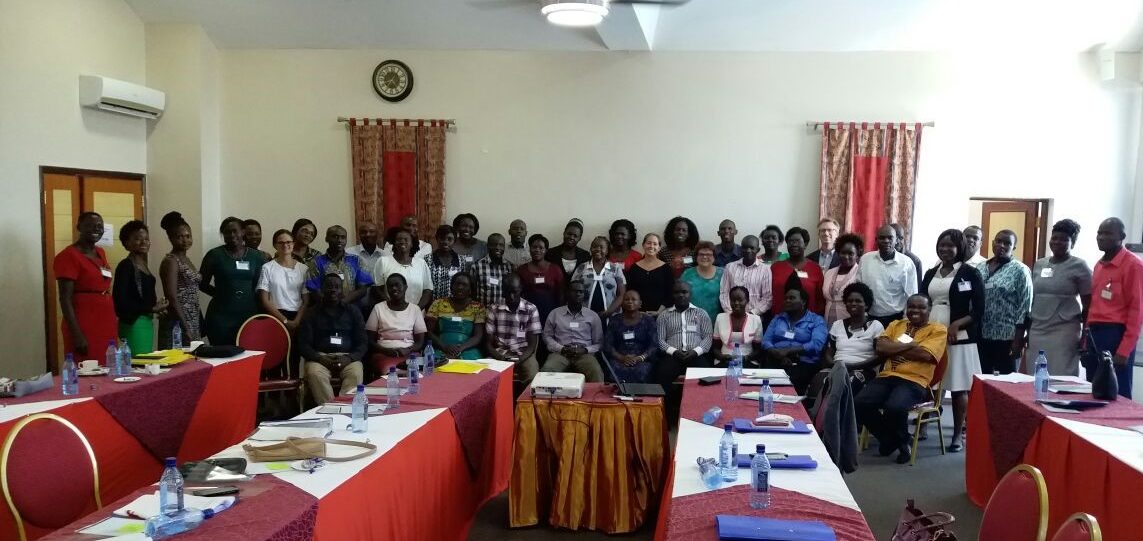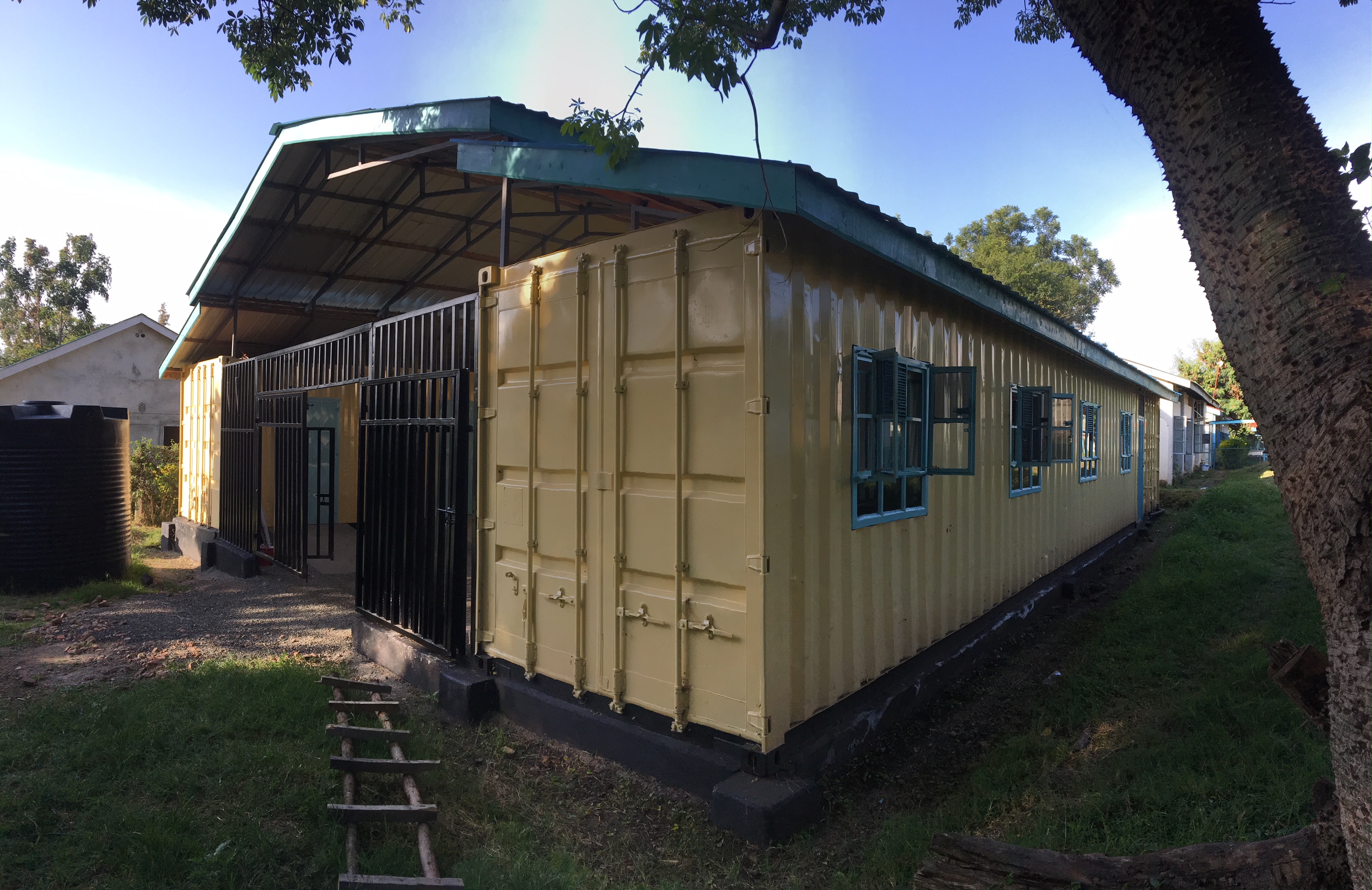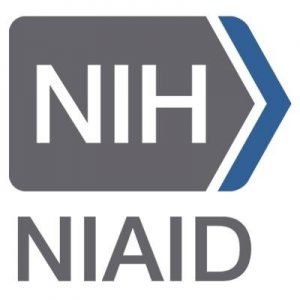Malaria chemoprevention in children with sickle cell anemia in Western Kenya
Sickle cell anemia (SCA) afflicts over 240,000 newborns in sub-Saharan Africa annually. These children are at high risk of death owing, in part, to their high

risk for falciparum malaria. Currently, daily malaria prophylaxis with Proguanil is recommended for children with SCA, but little evidence exists to support this preventive strategy. Intermittent preventive therapy against malaria, which consists of scheduled administration of antimalarials, is recommended for other high risk groups in Africa, including pregnant women and infants, based upon large, comparative efficacy trials. These trials have not been conducted in the expanding population of African children with SCA.

With partners from Moi University and DGHI, we are conducting the EPiTOMISE study: Enhancing Preventive Therapy Of Malaria in children with Sickle cell anemia in East Africa. This is a randomized, open-label trial of three malaria chemoprevention regimens in young children with sickle cell anemia in Western Kenya. We are testing the comparative efficacies of monthly sulfadoxine-pyrimethamine/amodiaquine and monthly dihydroartemisinin-piperaquine with that of daily proguanil to prevent malaria in these children. In addition, we are testing the relative efficacies of these antimalarial regimens to prevent SCA-related morbidity. For more details see our DGHI coverage.

This study is registered with clinicaltrials.gov as NCT03178643 and with the Pan African Clinical Trials Registry PACTR201707002371165.
EPiTOMISE began enrolling participants in January 2018 in Homa Bay and concluded followup in December 2020.
Partners in this project include:
- Festus M Njuguna MBChB MMed PhD, Moi University School of Medicine
- Wendy O’Meara PhD, Duke Global Health Institute
- Duke Clinical Research Institute


![]()
![]()
This project is funded by an R01 award from NHLBI.
Mechanisms of protection from severe falciparum malaria in sickle-trait

Sickle-trait hemoglobin confers dramatic and consistent protection from falciparum malaria: in clinical studies, heterozygous hemoglobin S (HbAS, or sickle-trait) reduces the risk of severe, life-threatening falciparum by 91% in African children. The mechanisms of this protection remain obscure. In molecular investigations, sickle-trait is associated with attenuated cytoadherence of infected red blood cells (iRBCs) to microvascular endothelium and aberrant trafficking of parasite-derived proteins to the iRBC surface. The mechanisms by which sickle-trait disrupts these parasite phenotypes and thereby protects children from life-threatening falciparum malaria remain incompletely understood, and may include elements from four broad mechanisms: attenuation of parasite growth, disruption of extracellular binding, modulation of innate immune responses, and attenuation of adaptive immunity (see Figure).
We have observed that parasites growing in sickle-trait cells fail almost completely to bind to the host receptor EPCR, an interaction which is closely linked to severe malaria. Interestingly, sickle-trait does not prevent the transcription of mRNA transcripts encoding PfEMP1 in general or specifically those variants that participate in this binding interaction. In contrat, sickle-trait very much does reduce the presentation on the RBC surface of translated PfEMP1 protein. Collectively these findings suggest a post-transcriptional mechanism for the defect in EPCR binding in sickle-trait cells. These findings were reported here in PLOS Pathogens.
In parallel , we performed an unbiased parasite comparative transcriptomics screen in normal and sickle-trait cells, and did so both in vitro using reference lines and in vivo using fresh parasites from Malian children with malaria. In vitro, using lines 3D7 and FUP, transcriptional programs were overall very conserved in sickle-trait cells, though they did diverge late in the parasite life-cycle suggesting defects in egress or merozoite formation. In fresh parasites, we observed significant differential expression of in trophozoite-stage parasites, including significant overexpression in sickle-trait children of transcripts encoding the putative protein phosphatase PF3D7_1127000 of over 30-fold. Full results are reported here in mSphere and the data are deposited here in NCBI as PRJNA685106. These results were fortified subsequently in a GWAS of parasite variation in people with and without HbS, in which variants in PF3D7_1127000 were 1 of 3 parasite loci enriched in people with sickle-trait. The mechanism of this is unknown, as is the link between this parasite adaptation to growth in sickle-trait cells and the attenuated pathogenesis of parasites in sickle-trait cells.
Partners in this project have included:
- Steve Haase PhD, Dept of Biology and University Program in Genetics and Genomics, Duke University
- Nirmish Shah MD, Division of Hematology, Duke University Medical Center
- Mahamadou Diakite PharmD DPhil, University of Sciences, Techniques and Technologies of Bamako, Mali
- Thomas Lavstsen PhD, Center for Medical Parasitology, University of Copenhagen, Denmark
- Gavin Band PhD, Wellcome Centre for Human Genetics, University of Oxford, UK



This project was funded by an R21 award from NIAID.
Prevention of pregnancy-associated malaria in sub-Saharan Africa
In sub-Saharan Africa, antenatal maternal malaria infections are a major cause of low birthweight and neonatal mortality. Therefore, in most malaria-endemic African countries, pregnant women receive a suite of malaria-prevention measures, including insecticide-treated bednets and intermittent preventive therapy (IPTp) with antimalarials. The primary antimalarial used is the combination sulfadoxine-pyrimethamine, to which partial resistance is highly prevalent across Africa. Therefore, new approaches to preventing antenatal malaria are continually needed.
With partners from multiple Western and African institutions, the Malaria in Pregnancy Consortium tested alternate strategies to mitigate the effects of antenatal malaria and measured the efficacy of SP to prevent low birthweight. Follow-on studies from Mipc-sponsored field studies are focused on testing the impact of subpatent parasites on birth outcomes, describing the epidemiology of subpatent parasitemias during pregnancy, and testing for associations between emerging resistance markers and birth outcomes.
Partners in this project include:
- Mwayiwawo Madanitsa MD PhD, Liverpool School of Tropical Medicine
- Victor Mwapasa MD PhD, University of Malawi College of Medicine
- Feiko O ter Kuile MD PhD, Liverpool School of Tropical Medicine and KEMRI



This project has been funded by an award to the Liverpool School of Tropical Medicine by the Bill and Melinda Gates Foundation.
1st-trimester malaria screening and treatment in high-transmission settings
There is a broad evidence base for strategies to mitigate the risk of antenatal malaria starting in the 2nd trimester. However, there are currently no formal, evidence-supported strategies to prevent, detect, or treat infections during the 1st trimester, when effects on fetal development can be severe by disrupting organogenesis or placentation.
With partners from the Kinshasa School of Public Health, Moi University, AMPATH, DHGI, Imperial College London, UNC, and the Duke Clinical Research Institute, we are conducting INTREPiD: Improving Neonatal Health Through Rapid Malaria Testing in Early Pregnancy with High-Sensitivity Diagnostics. INTREPiD will enroll women in the 1st trimester in DR Congo and in Kenya and randomize them to either usual care or to screening with a high-sensitivity malaria RDT. The goal is to test if this screening strategy improves pregnancy outcome.
INTREPiD is registered as NCT05757167 and as PACTR202302536807007 and funded by NIAID.
Partners in this project include:
- Jeremiah Laktabai MD, Moi University School of Medicine
- Antoinette K Tshefu MD PhD MPH, Kinshasa School of Public Health
- Melissa Bauserman MD MPH, University of North Carolina
- Patrick Walker PhD, Imperial College




This project is funded by NIAID.

Molecular epidemiology of P. falciparum transmission in Western Kenya

Since 2017, we have been following up to 75 households across 5 villages in malaria-endemic communities in Bungoma County, Kenya, in a longitudinal cohort study. We visit the houses each week to collect resting mosquitos early in the morning, and each month to collect fingerprick blood samples from all people in the household. The goals are to understand which infected people are transmitting parasites to mosquitos, and to understand which people are being bitten more often than average.
The ability to track infections from human to mosquito and back again would allow us to understand the dynamics and scale of transmission in a way that has not previously been possible. These results will provide insight into the expected impact of interventions designed to target hotspots.
This project has resulted in numerous fresh insights:
- In this 2021 paper, we reported that, compared to symptomatic malaria infections, asymptomatic infections has 2.6x the likelihood of being transmitted to mosquitos, and estimated that 95% of mosquito infections resulted from asymptomatic infections.
- In this 2021 paper, we analyzed how the diversity of parasite sequences encoding csp and ama1 influenced the risk of symptoms when infected. We observed that previously-unseen csp and ama1 sequences increased the likelihood of symptomatic malaria, and that the presence of these mixed with prior sequences attenuated the association. This is consistent with a model whereby prior exposure to parasite antigens attenuates immune responses upon re-exposure, and supports a model of interference in mixed infections.
- In this 2021 paper, we analyzed the risk of developing symptomatic malaria following an asymptomatic episode, using longitudinal data from our cohort participants. We observed that asymptomatically-infected people had 2.6x the risk of developing symptomatic malaria in the next month, compared to uninfected people, indicating that prompt intervention in such people can reduce malaria.
- In this 2022 paper, we compared the parasite population structures in mosquito and human hosts. We observed by several metrics a greater degree of csp and ama1 sequence diversity in the mosquito infections, establishing Anopheline vectors as a reservoir of overall parasite population diversity.
- In this 2023 paper, we tested the hypothesis that symptomatic infections reflected a more robust immune response by comparing the time to reinfection with homologous parasites after clearance between symptomatic and asymptomatic infections. When strains were defined on the basis of known functional epitopes in csp and ama1, we observed strain-specific prolongation of time-to-reinfection with homologous strains following symptomatic infections, suggesting that this delayed reinfection is a signature of adaptive immunity.
Additional analyses are forthcoming.
Partners in this project include:
- Wendy O’Meara PhD, Duke Global Health Institute
- Andrew Obala PhD, Moi University School of Medicine
- Amy Wesolowski PhD, Johns Hopkins University
This project is funded by an R01 award from NIAID.
Importation of malaria parasites into an epidemic-prone zone of Northwestern Kenya
Turkana County in the arid Northwest of Kenya is traditionally considered malaria-free owing to the low densities of humans and of mosquito vectors. However, there are little data to support this, and anecdotal reports indicate there are convincing, parasitologically-confirmed cases of malaria. In addition, the epidemiology of hosts is changing in Turkana County, owing to changes in land use patterns and increased migration from malaria-endemic areas. Therefore, Turkana county appears both suitable for malaria transmission and at risk of significant importation for the establishment of autochthonous transmission.

In this project, we are conducting reactive case detection of confirmed malaria cases at six health centers in and around Lodwar, Kenya, and screening departing travelers to Lodwar for malaria at the main transit centers in Kitale and Eldoret. The goals of these investigations are to understand the spatial clustering of infections in this low-transmission setting, to test for the association between recent travel and malaria risk, and to estimate the rate of importation of malaria overall and of specific strains into Lodwar.
Using these tools, we can better develop and apply tools to estimate parasite importation into suitable environments, and understand the factors that lead to successful establishment of local malaria transmission.
Partners in this project include:
-
- Wendy O’Meara PhD, Duke Global Health Institute
- Andrew Obala PhD, Moi University School of Medicine
- Amy Wesolowski PhD, Johns Hopkins University
This project was funded by an R21 award from NIAID.


